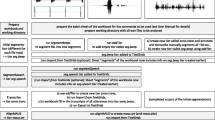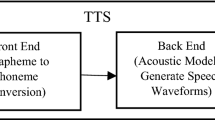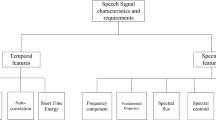Abstract
For voice handicapped people, an easy to use voicing aid device is wanted. In mobile telephony, so-called non-speaking speech communication is an expected solution for essential privacy as well as for acoustic nuisance prevention. The study introduced here intends to cover both issues, introducing a system where the whispering (non-speaking voice or talk without vocal fold activation) signal is converted to pseudo-real voice signal, which is to be sent to, or heard by, the other party. The study also includes validation tests with multiple volunteers for its output legibility. Unlike general concept of speech regeneration being inclined to signal recognition or decomposition to text followed by electronic reading (voicing), our system converts it almost directly without recognition or decomposition steps. The processing is based on repetitive playback of short time autocorrelation, conducted by synthetic pitch pulse. A real time software pipeline process is under development.
Similar content being viewed by others
References
Matsuda, M., & Kasuya, H. (1999). Acoustic property and synthesis of whispery voice. IEICE Technical Report, 99(73), 39–46.
Ito, T., Takeda, K., & Itakura, F. (2001). Acoustic analysis for speech recognition of whispered voice. Acoustical Society of Japan 2001 Autumn Meeting, 2001(2), 205–206.
Passos, A., & Takeuchi, Y. (2009). External impulse-echo measurement of vocal tract and its feasibility for non-speaking telephony. IEICE Technical Report, 109(10), 21–24.
Nakamura, K., Toda, T., Saruwatari, H., & Shikano, K. (2006). Speaking Aid system for total laryngectomees using voice conversion of body transmitted artificial speech. Proceedings of Interspeech, 2006, 1395–1398.
Ahmadi, F., McLoughlin, I. V., & Sharifzadeh, H. R. (2008). Analysis-by synthesis method for whisper-speech reconstruction. In Proceedings of IEEE APCCAS (pp. 1280–1283).
Sharifzadeh, H. R., McLoughlin, I. V., & Ahamdi, F. (2009). Voiced speech from whispers for post-laryngectomised patients. IAENG International Journal of Computer Science, 36(4), IJCS36413.
Sims, C. (1989). CONSUMER’S WORLD: phones become easier for the disabled to use. The New York Times, Dec. 30, 1989 (p. 150).
Fukumoto, M., & Tonomura, Y. (1999). Whisper: a wristwatch style wearable handset. In CHI ’99 (pp. 112–119). New York: ACM Press.
Manabe, H., Hiraiwa, A., & Sugimura, T. (2003). Unvoiced speech recognition using EMG—mime speech recognition. In CHI ’03 (pp. 794–795). New York: ACM Press.
Sawhney, N., & Schmandt, C. (1999). Nomadic Radio: scaleable and contextual notification for wearable audio messaging. In CHI ’99 (pp. 96–103). New York: ACM Press.
Ahmed, S. A., & Millar, D. J. (1998). Cellular telephone audio input compensation system and method, U.S. Patent 5,852,769, Dec. 1998.
Takeuchi, Y. (2003). Microphone protected by smooth surface sonadome to pick-up whispering voice (unvoiced voice) with static aspiration pressure. IEICE Technical Report, 103(331), 19–22.
Cirillo, J. (2004). Communication by unvoiced speech: the role of whispering. Annals of the Brazilian Academy of Sciences, 76(2), 413–423.
Espi, M., & Takeuchi, Y. (2009). On the mandatory part of frequency spectrum of whispering signal in order to synthesize pseudo-voice. IEICE Technical Report, 109(10), 21–24.
Harris, R. W., & Gorski, J. C. (1977). Narrow band voice transmission, QST, Dec. 1977.
Fano, R. (1950). Short time autocorrelation function and power spectra. The Journal of the Acoustical Society of America, 22(5), 546–550.
Takeuchi, Y. (2003). Voice regeneration system to convert whispering voice to pseudo-real voice. IEICE Technical Report, 103(331), 13–18.
Author information
Authors and Affiliations
Corresponding author
Rights and permissions
About this article
Cite this article
Passos, A.P. Transformation of whispering voice to pseudo-real voice for unvoiced telephony and communication aid for voice-handicapped persons. Telecommun Syst 52, 1413–1422 (2013). https://doi.org/10.1007/s11235-011-9619-9
Published:
Issue Date:
DOI: https://doi.org/10.1007/s11235-011-9619-9




